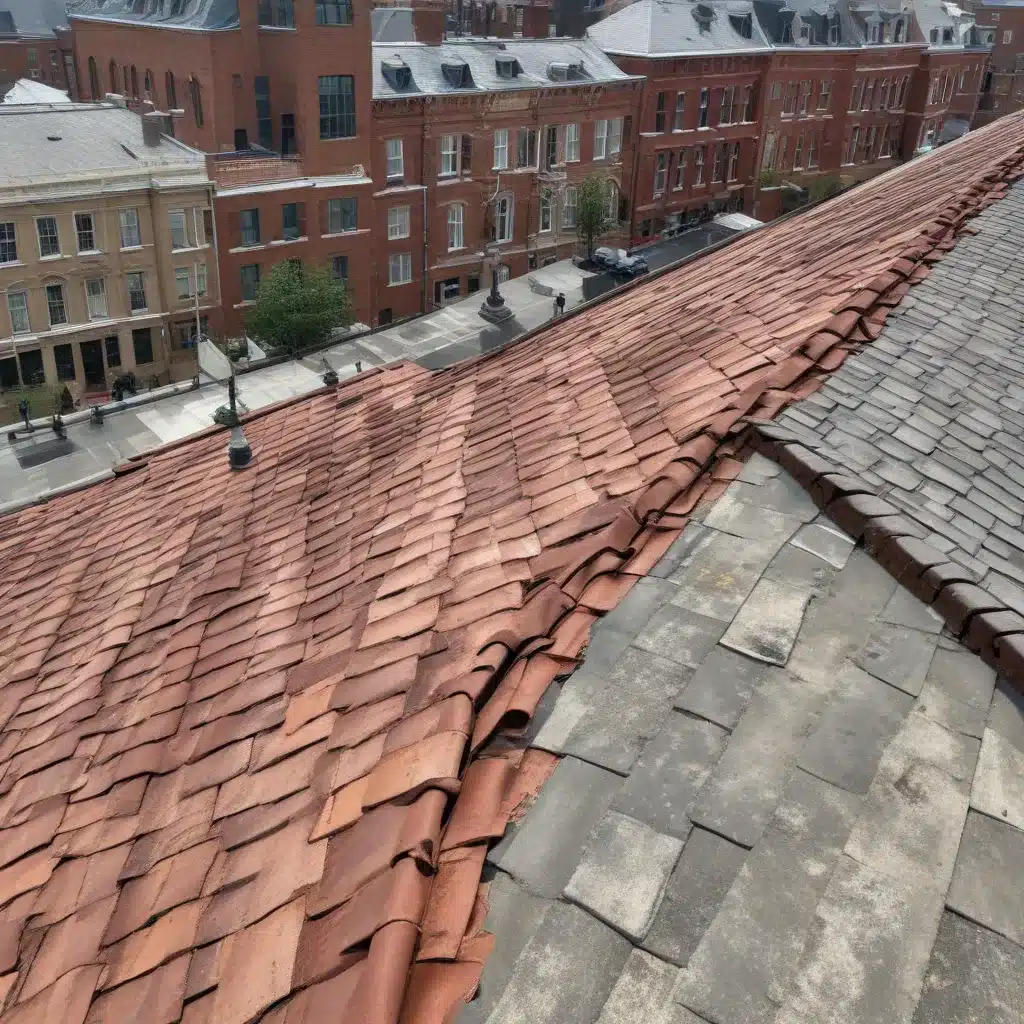
Understanding the Unique Challenges of Historic Buildings
Historic and heritage buildings hold immense cultural, architectural, and historical significance, making their preservation a critical undertaking. However, these structures often pose unique challenges when it comes to maintaining their structural integrity, particularly in preventing roof leaks. The intricate designs, aged materials, and complex construction methods that define historic buildings can make them more susceptible to water infiltration.
One of the primary concerns for owners of historic buildings is the potential for water damage. Older heating and cooling systems, improperly installed pipework, and aging building materials can all contribute to leaks that can compromise the structure, damage invaluable artifacts, and disrupt the building’s operations. Preventing these costly and potentially devastating issues requires a comprehensive understanding of the unique characteristics and vulnerabilities of historic buildings.
Implementing Effective Leak Detection Systems
To safeguard historic and heritage buildings, many property owners have turned to specialized water leak detection systems, such as the Andel Floodline range. These systems are designed to provide an early warning signal, allowing for prompt action to mitigate damage and minimize disruption.
The Andel Floodline system, widely used in iconic structures like the Houses of Parliament, Buckingham Palace, and the British Library, employs a network of sensors and control panels to detect even the smallest leaks. The flexibility of the Floodline system allows for seamless integration into historic buildings, ensuring the modern equipment does not compromise the structure’s traditional aesthetics or design.
By installing these advanced leak detection systems, property managers can proactively monitor for potential issues, enabling them to address problems before they escalate into costly and potentially irreparable damage. The early warning capabilities of these systems are particularly crucial in historic buildings, where many artifacts and materials are irreplaceable.
Maintaining a Healthy Roof Environment
In addition to implementing specialized leak detection technologies, proper roof maintenance and ventilation are essential for preserving historic buildings. One of the primary causes of roof leaks in these structures is the formation of ice dams, a common problem in regions with significant snowfall.
Ice dams occur when the temperature at the roof’s eave is significantly colder than the temperature at the peak, causing melted snow to refreeze and create a barrier that traps water. This trapped water can then seep under the roofing materials and into the building’s interior, leading to water damage, rotting walls, and even structural deterioration.
To prevent ice dams, property owners should focus on maintaining a consistent, “cold roof” environment. This can be achieved through proper insulation, ventilation, and the strategic placement of vents and eave protection. Retrofitting a continuous ridge vent or installing styrofoam ventilation chutes between the roof rafters can help ensure a consistent temperature across the entire roof surface, reducing the risk of ice dam formation.
For historic buildings in extreme climates, the installation of electric heating cables along the roof’s eaves can provide an additional layer of protection, actively melting any ice buildups and minimizing the potential for leaks.
Safeguarding Historic Roofing Materials
Preserving the unique roofing materials found in many historic structures is another essential aspect of leak prevention. Traditional roofing systems, such as slate, clay tiles, or metal panels, often require specialized knowledge and techniques for proper maintenance and repair.
When working on historic roofs, it is crucial to employ roofing professionals with experience in handling and restoring these delicate materials. Improper installation or the use of incompatible materials can compromise the roof’s integrity and lead to accelerated deterioration, increasing the risk of leaks.
Innovative coatings, such as Rhino Shield’s ceramic elastomeric formulation, can also play a vital role in preserving historic roofing materials. These high-performance coatings can provide long-lasting protection against the elements, including UV damage, salt corrosion, and water ingress, without altering the building’s original appearance.
By prioritizing the use of historically appropriate materials and techniques, property owners can ensure the longevity of their historic roofing systems while maintaining the building’s architectural authenticity.
Prioritizing Safety and Compliance
When undertaking any roof maintenance or repair work on historic buildings, it is essential to adhere to strict safety protocols and regulatory requirements. These structures often contain hazardous materials, such as asbestos or lead-based paints, which must be handled by licensed professionals using specialized equipment and procedures.
Additionally, historic buildings may be subject to specific zoning laws, preservation guidelines, or heritage designations that dictate the acceptable methods and materials for roofing projects. Failure to comply with these regulations can result in fines, delays, or even the inability to complete the necessary work.
By working closely with experienced roofing contractors, property managers can ensure that all safety and compliance requirements are met, protecting both the building and the workers involved in the project.
Conclusion
Preserving the integrity and longevity of historic and heritage buildings is a complex and multifaceted challenge, with roof leak prevention being a crucial aspect. By implementing advanced leak detection systems, maintaining consistent roof environments, safeguarding historic roofing materials, and prioritizing safety and compliance, property owners can effectively mitigate the unique risks faced by these invaluable structures.
As a seasoned roofing professional, I encourage property owners and managers of historic buildings to explore the comprehensive solutions and best practices outlined in this article. By taking a proactive and holistic approach to roof leak prevention, you can ensure the continued protection and preservation of these architectural and cultural treasures for generations to come.
For more information on our roofing services and guidance for historic buildings, please visit Roofers in Northampton. Our team of experienced professionals is dedicated to providing tailored solutions that address the unique needs of historic properties while upholding the highest standards of quality and safety.

